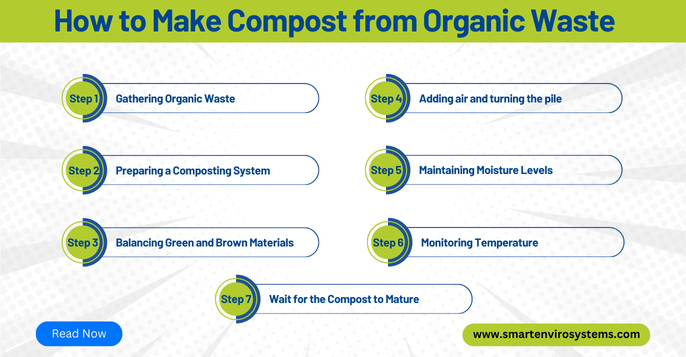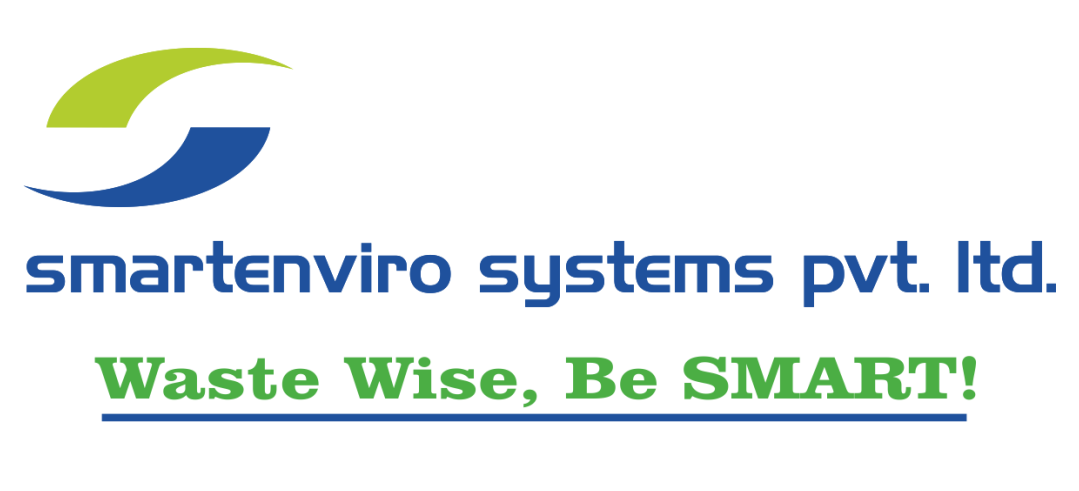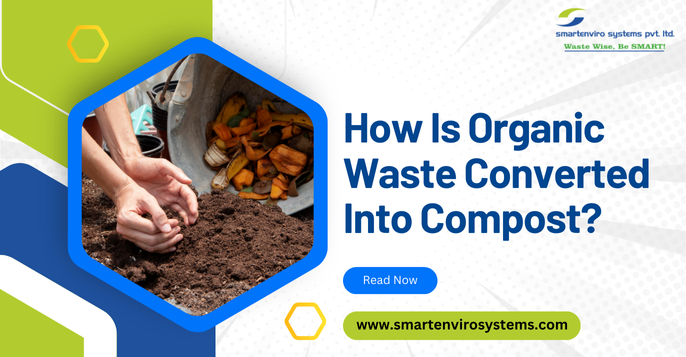Nowadays waste management is important like never before. Organic waste: food leftovers in houses and restaurants, garden clippings, and other biodegradable material together makes up a significant portion of domestic and commercial waste. Instead of disposing of this waste in landfills where it is more profitable to rot, converting it into compost can be very beneficial.
Composting reduces the volume of waste while it also leads to soil enrichment, better plant growth, and sustainable farming practices. This blog will make you meet the targets in organic waste converter to compost through different modern methodologies and technologies.
What is Composting?
Composting is defined as a biological procedure through which natural organic materials are broken down to a nutrient-rich end product known as compost. The result is a colorfully dark, nice-earth-smelling material that can be used to enliven garden soil.
Composting is the process in which organic waste material is digested and broken down through the activity of microorganisms, such as bacteria and fungi, and also larger organisms like worms and insects.
These organisms ingest the organic material and break it down into simpler substances that plants can use as nutrients. Having a compost maker for organic waste enhances this natural process, giving better quality compost within a very short period.
Why Compost Organic Waste?
Composting has many advantages, both personal and environmental. Here are some of the reasons composting is a beneficial practice:
Waste Reduction: Composting organic waste significantly reduces trash that would have otherwise gone to landfills. This helps to save landfilling space and decreases the emission of greenhouse gases, particularly methane, which emanates from the anaerobic decomposition of organic waste in landfills.
Improvement of Soil Structure: Compost makes soil nutrient-rich, hence boosting its structure and water-holding ability. This fosters healthy plant growth, enabling better crop yields and stronger gardens.
Saves Cash: Since homemade compost usage avoids the application of expensive chemical fertilizers, savings result. And that’s not to mention the harm they do to the environment. Home or community composting can also save on waste disposal costs.
Promotes Sustainability: Composting is the natural recycling of organic matter back into the earth, thus allowing the growth-decay cycle to be a self-sustaining process/way of saving natural resources by way of reduction in the use of synthetic fertilizers.
How to Make Compost from Organic Waste

Step 1: Gathering Organic Waste
Organic waste shall be the first to be collected. This includes food waste such as fruit and vegetable peels, eggshells, coffee grounds, and garden waste like leaves, grass clippings, and small branches. Of course, exclude non-biodegradable items like plastic, glass, and metal together with animal products like meat and dairy. These will attract pests and cause foul odors.
Step 2: Preparing a Composting System
After collecting the organic waste, a composting system should be developed. There are many variations, from the simplest backyard compost pile to complicated organic waste composter machines. One of the easiest and cheapest methods to get started with is a backyard compost bin or heap.
Step 3: Balancing Green and Brown Materials
An effective compost should have the right mix of green materials rich in nitrogen and brown materials rich in carbon. Green materials include fresh grass clippings, vegetable scraps, and coffee grounds, while brown materials are dried leaves, straw, and cardboard. A general proportion is close to 3 portions brown to 1 portion green.
Step 4: Adding air and turning the pile
Aeration is an inseparable part of the composting process. Microorganisms, whether aerobic or anaerobic, involved in the degradation process of organic refuse, perform their function efficiently only in the presence of oxygen.
Traditional composting methods rely on the prong of a garden fork or a compost aerator that is frequently turned into the organic matter to provide enough oxygen and expedite the process, but the modern waste-to-compost converters or organic waste recycling systems have built-in mechanisms to provide adequate aeration, thus reducing the task of turning the organic material.
Step 5: Maintaining Moisture Levels
One of the ingredients essential for composting is water, as various microorganisms will need this to decompose organic matter. The moisture content in the compost pile should be approximately that of a wrung-out sponge. Too much water can cause anaerobic conditions and, correspondingly, foul odors, while too little water causes the composting process to slow down. Regularly checking and maintaining moisture levels is very important in coming up with quality compost.
Step 6: Monitoring Temperature
An ideal compost pile should be well maintained, and heating will indicate that microorganisms are working on the decomposition. In instances of such, the center of the pile may increase up to 140-160°F (60-70°C) where pathogens and weed seeds are exterminated.
Monitoring of the temperature is key, and a compost thermometer is of importance, more so to a bulk producer. In case of a drop in temperature, one may need to add more green material or turn the pile to aerate it, thus rejuvenating the process of decomposition.
Step 7: Wait for the Compost to Mature
Composting does not happen instantly; it takes some time to degrade the organic materials completely. Again, depending on the method and type of the materials taken, the process time period may vary from a few weeks to several months for the production of mature compost. A mature compost would be dark brown in color, crumbly in texture, and has an earthy smell.
All this time, an organic waste composting machine can save a lot of this time. A mature darken-brown, crumbly, and earthy-smelling compost is produced by this organic waste composting machine in only 3-4 weeks.
Different methods of composting
1. Traditional Pile or Composting in Bins: It is no science, rather just piling all organic wastes in heap or bin and let nature do its job. Regular turning up is required for proper aeration and decomposition.
2. Vermicomposting: This refers to the process of composting by utilizing worms to break down organic waste material. The worms ingest the refuse and then excrete castings, which are also highly valued for their nutrient content and can be excellent compost. This method is great for small-scale composting indoors.
3. In-vessel Composting: Also a method of composting organic refuse, the refuse in this method is composted in a completely enclosed container or drum where temperature, moisture, and aeration of the materials being decomposed can be controlled. This speeds up and improves the efficiency of the process. Huge urban areas and large-scale composting can be suitable for this system.
4. Bokashi Composting: This involves anaerobic fermentation at the decomposition stage. The mixture contains special bran that is inoculated with effective microorganisms, which aid in the breaking down of the waste. Bokashi composting therefore, is any ideal method to compost any kind of waste generated in a kitchen, including meat and dairy products.
Obstacles in Composting and How to Overcome Them
Composting is an altogether simple process, but pitfalls are possible, such as odors, pests, and slow decomposition – and these are all common. In order to avoid these pitfalls, here are some tips:
Odors: They generally stem from too much moisture in the pile or an imbalance between green and brown materials. More brown ingredients can be added if the pile smells bad; then mix it again.
Pest Control: Do not include in compost pile food waste, such as meats, dairy products, and fatty/oily foods, to help deter rodents and flies from the pile. A covered compost bin or an in-vessel composting system will also discourage pests.
Speed Up Decomposition: If the composting process is in any way slow, then one could consider factors such as balance between green and brown materials, moisture level, and aeration. Some modification can be made for speeding up the processes. This can also be done with the help of a garbage to compost converter that comes with temperature management features.
Conclusion: Choose the best composting solution
Composting is one of the most efficient means of managing organic waste. Is the art of turning organic waste into useful compost that is used to enrich the soil in support of agriculture. From a homeowner with a backyard to managing waste effectively for your business, waste management calls for the right composting solution.
What options are available in the market today? Smart Enviro System offers some of the best composting solutions available today. They have a system that can handle any range of fresh organic waste with their Smart Batch Composter and Smart Drum Composter, be it for use in residential or even commercial purposes.
Some of the features found in these composters include a proper level of aeration, control over moisture, and temperature—everything that will assure the final user of high-quality compost within a short period. Investing in the Smart Enviro System composter helps green the environment and at the same time enjoy the abundant compost, which boasts the growth of your plants and soil.
Start composting today for a cleaner, greener planet!

